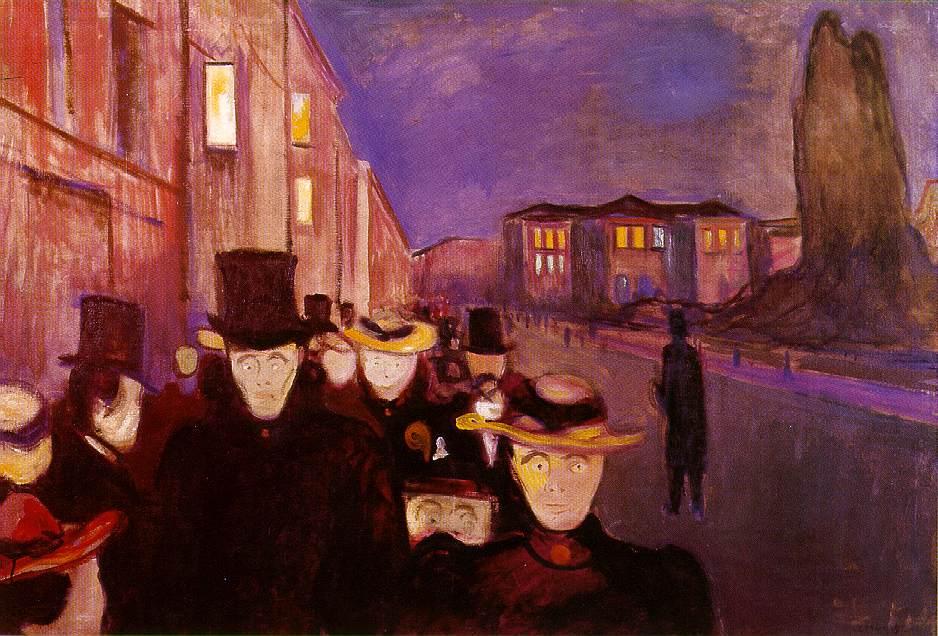Text: The Wasteland
Task: Analysis of the extract discussed at school
OBJECTIVES
Cultural: analysis of modernism's themes and objectives
Intertextual: look for intertextuality aspects in the text
Linguistic: find out liguistic devices and themes of a modernist poem
The Wasteland is a difficult poem made up of 433 lines and divided into five sections with no logical continuity between them, each section has a different symbolic meaning which contributes to create a single message of the whole work. The Wasteland can be read on many levels and in the poem past and present coexist just as they do in the human mind.
Extract taken from the 1st section called "the Burial of the Dead":
"Unreal City"
The setting of this extract is the City (the centre of affairs) of modern London in 1920s. Eliot hints at the local and temporal setting ("city", "London Bridge", "king William street", "St. Mary Woolnoth"; "the brown fog of a winter dawn", "the final stroke of nine".)
Eliot represents a winter morning in London centre, where a lot of clerks rush to work. They are described like dead souls, prisoners of a miserable, monotonous routine: "I had not thought death had undone so many", "each man fix his eyes before his feet".
The extract is mainly characterized by intertextuality technique: it is rich in quotation.
LINE/S | QUOTATIONS/ALLUSIONS | SOURCE | FUNCTION/S OF THE ALLUSIONS |
Line 1 | "Unreal City" | Cf. Baudelaire's The Seven Old Men: "Crowded city, city full of dreams / where the ghost in broad daylight stops the passer-by". | London acquires a spectral dimension: it is unreal, full of dreams and inhabited by ghosts moving in broad daylight. |
Line 4 | "I had not thought death had undone so many" | Cf. Dante's Inferno, Canto III, 55-7: " Si lunga tratta / di gente ch'io non avrei mai creduto, / che morte tanta n'avesse disfatta." Dante is speaking of the endless traino f unhappy spirits, those who in life knew neither good or evil | London citizens are described as if they had no identity so they all looked the same and if they were dead. There is a comparison between the 20th century London and Dante's hell, between the white collar clerks who perform monotonous office routine actions and the lost souls. Both cannot change they existence and lifestyle. |
Line 5 | "Sighs, short and infrequent" | Cf. Dante's Inferno, Canto IV, 25-7, "quivi, secondo che per ascoltare / non avea pianto, ma' che di sospiri, / che l'aurea eternal facevan tremare." Dante is in Limbo. The sighs are those of the unbaptised people who desire but cannot hope to see Christ. | London commuters are very similar to the souls of Dante's Limbo . As the soul cannot hope to see Christ, in the same way London commuters do not hope to have a satisfactory life. |
Line 9 | "With a dead sound on the final stroke of nine" | Cf. Luke, 22:44 "and there was a darkness over all the earth until the ninth hour," | The context of Christ's death is brought to bear on the context of the passage. |
In this passage (and also in the whole poem) Eliot juxtaposes fragments of the present with memories of the past. For instance, he refers to an Egyptian fertility rite ("That corpse", line 12), which is not more valid actually. Examples of the juxtaposition of the present and the past are :
•1. The gap between his time (that is modern London in the 1920s) and Baudelaire's time.
•2. The gap between his time and Dante's time.
•3. The gap between his present and the past of the first Punic war.
Extract taken from the last section: "What the Thunder Said".
In this extract the speaker, that is the poet, is going through a dry, barren, rocky land. The passage is based on the opposition between desert images in the first part and water images in the second one in which he represents his wish for fertility.
In the first 15 lines the poets describes a dry landscape. There's an extensive use of repetition: "no water" repeated five times, "rock" repeated five times, "road" repeated twice, "mountains" repeated five times: he emphasizes the desolation of the landscape and, in addition to this, he creates musicality.
Line 16 represents a turning point because the poet starts to imagine a different land, in opposition than that which is in front of him. As a matter of fact, he imagines a landscape characterized by the presence of trees and animals thanks to the existence of water. He repeats the word water four times in a positive sense: "if there were water", rock and the words spring, pool, the sound of water, the bird whose song suggests the sounds of water dripping and pine trees.
Both landscapes described have in common the elements of water and rock but while in the 1st part water is lacking, in the second part the presence of water makes life possible.
The sound "rock" is hard and suggests the harshness of the landscape, the sound "water", instead, is a melodious sound and has a pleasant effect.
As regards metre, rhythm and layout the poem is not divided into regular stanzas. Besides there's no regular metre. In the first parte the rhythm is more monotonous than in the second part where the rhythm appears melodious and you can find the echo of flowing water reproduced by the song of the bird.
As regards the layout the first part makes the reader think of a mass of rock while the second one suggests a waterfall.
